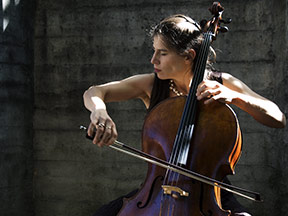projects
Forward and downward, turning neither to the left nor to the right
Action concert piece for ensemble after Plutarch and Kàroly Kerényi (2013)
for contrabass flute, trombone, 2 viola, cello, 2 percussions and other musicians as percussionists (8 to 20)
Commission: Collegium Novum Zürich/ Schlossmediale Werdenberg
First performance: Zürich, Collegium Novum, 9 April 2014
Collegium Novum, Jonathan Stockhammer (conductor)
Mirella Weingarten (space design), Jens Schubbe (dramaturgy)
Publisher: Edizioni musicali Rai Trade
Duration: ca. 25 m
Forward and downward, turning neither to the left nor to the right is an instrumental music theatre project in which the trombone is called upon to represent Theseus sailing off to Crete in order to penetrate the Labyrinth of Knossos (an acoustic Labyrinth created by the percussion ensemble).
In the Labyrinth he means to find and kill the Minotaur, embodied by the contrabass flute, accompanied and protected by two violas. A woman cellist with long hairs is representing Ariadne giving sound-life to the ball of red thread and singing her solitude after the abandon of Theseus.
The Labyrinth
As Plutarch reports, "Theseus followed the instructions Daedalus had given to Ariadne: keep going forward and downward, turning neither to the left nor to the right. Later, having slain the Minotaur, Theseus, together with his youths, danced the Crane, a choreographic evocation of the tortuous passages of the Labyrinth, consisting of certain complex rhythmic involutions and evolutions."
The twists and turns of the Labyrinth were vertical as well as horizontal, so that its penetration involved not only extension but also depth, the descent into a deep and elaborate underground realm. The cellist will acoustically embody the ball of red thread that Theseus ties to the entrance of the Labyrinth and then unwinds as he goes, thus creating a red line that defines, in part, the shape of the Labyrinth, marks his progress, and allows him to find his way back. The cello is representing the Labyrinth-project that Dedalus explained to Ariadne.
The 'Lamento' of Ariadne is all that is left of L'Arianna, Claudio Monteverdi's second opera, with a libretto by Ottavio Rinuccini. This surviving aria, 'Lasciatemi morire', was the first well-known example of operatic monody, the seconda prattica, as coined by Monteverdi, introducing new forms of diminuzioni and contrapuntal treatments of the sung solo lines. The 'Lamento d'Arianna' was preserved only because Monteverdi later (1623) published it as an independent piece. Although he had given rise to a revolution with the solo vocal writing of Ariadne, in which he was at pains to make the sung text intelligible, Monteverdi returned to the piece, transforming it into a five-voice madrigal, published as part of his Sixth Book of Madrigals in 1614, and he also reworked the musical material with a new religious text in Latin, the 'Pianto della Madonna', published in his collection Selva morale e spiritual in 1640.
The cellist will interpret Ariadne starting from the later polyphonic versions of the 'Lamento', highlighting the absence of the solo voice and the loss of this opera, and giving sound-corporeality to Monteverdi's complex reinterpretation of the monodic fragment.
Monteverdi's lost opera becomes the basic dramaturgical outline of the piece, a ghost-opera that in the end is the imaginary narration of L'Arianna itself, supported by Plutarch's late accounts.
Imke Frank (Photo by Regula Müdespacher)
